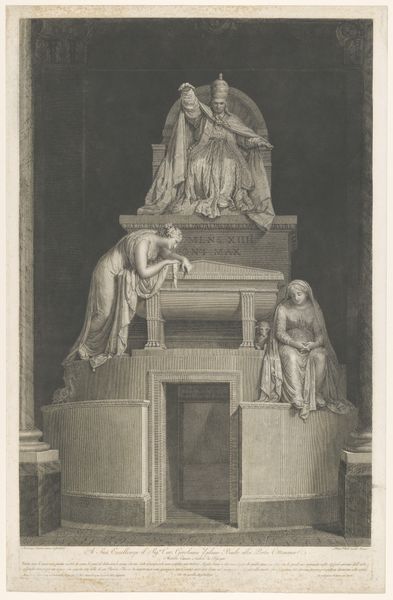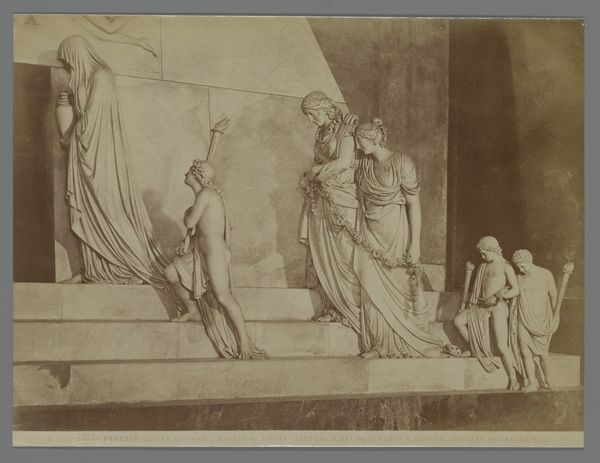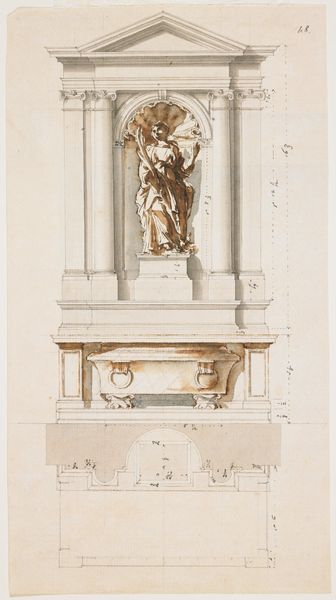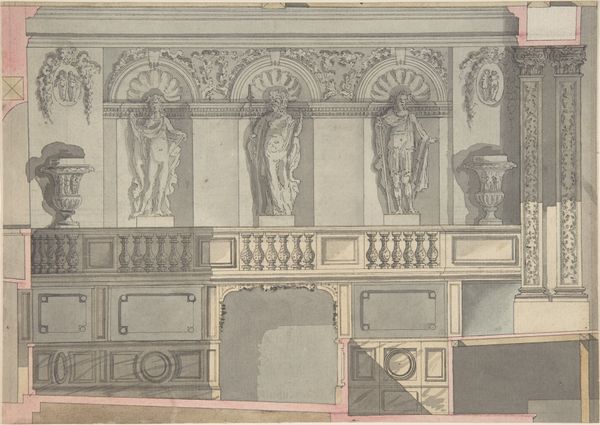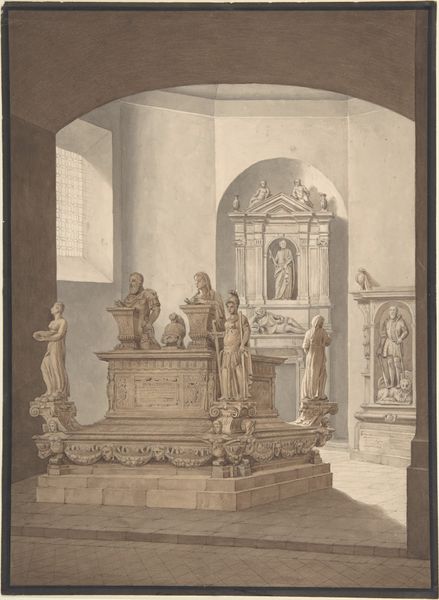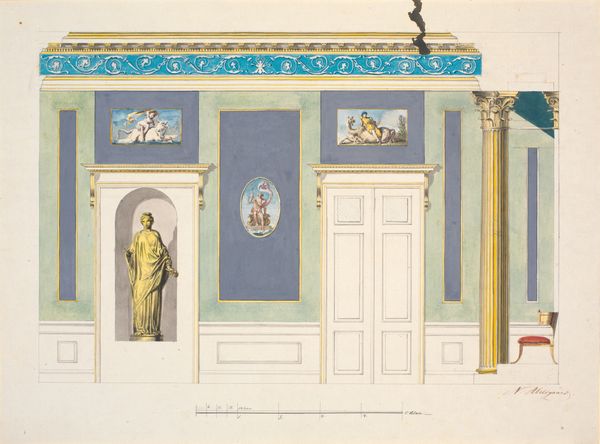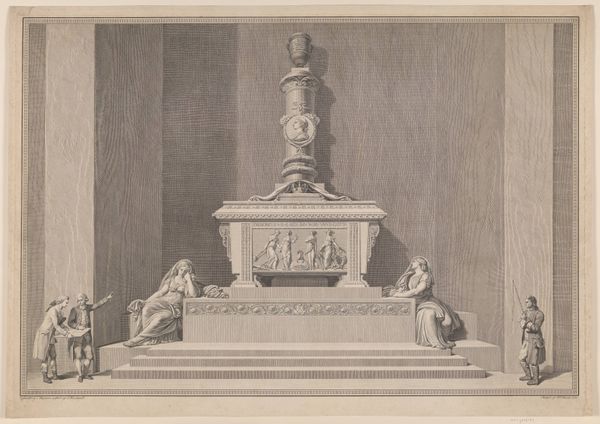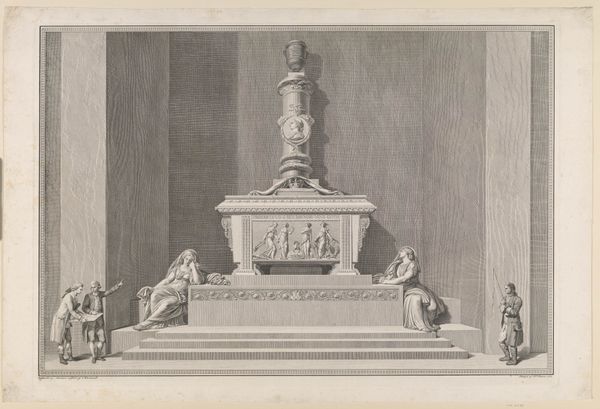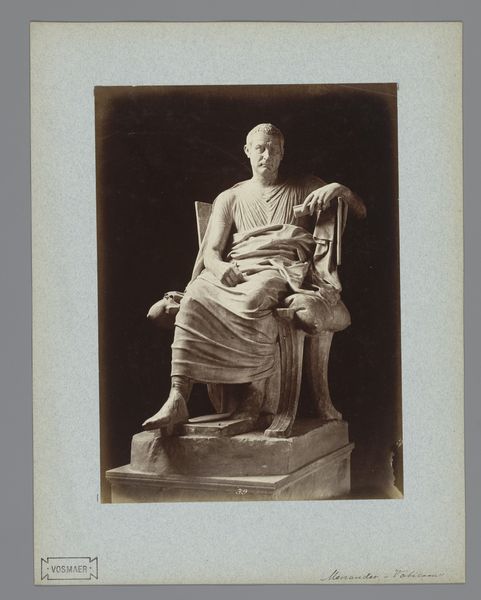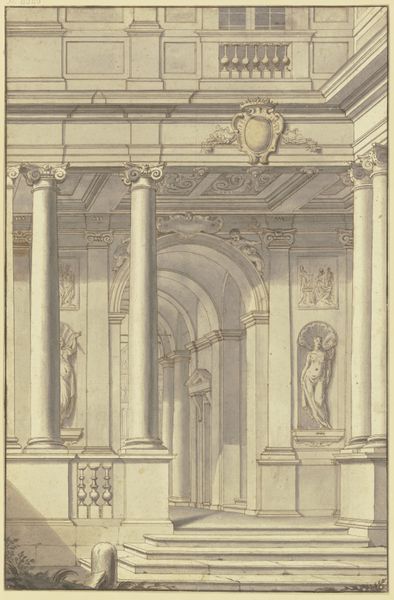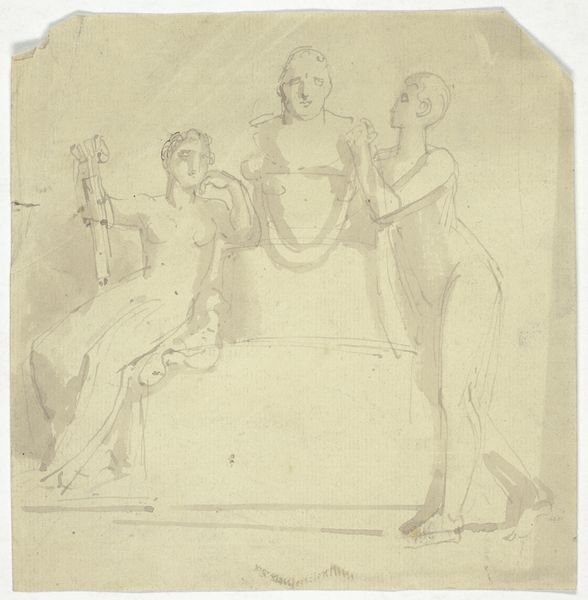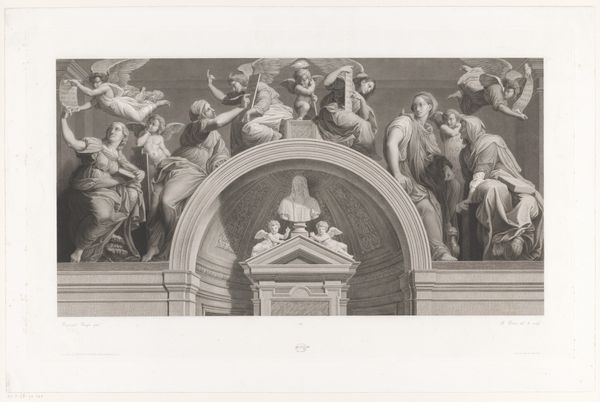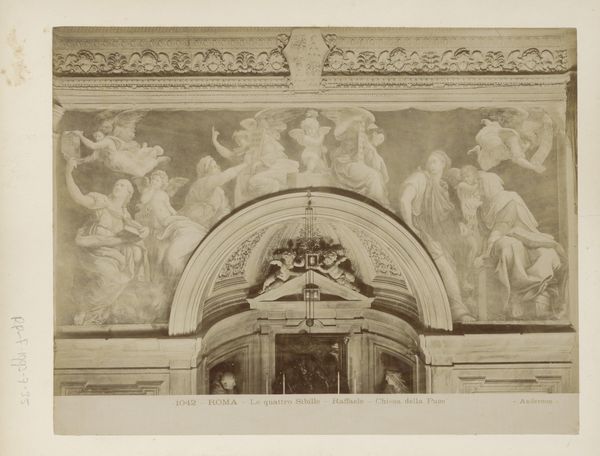
The Plaster Cast Collection in the Royal Academy of Fine Arts 1843
0:00
0:00
painting, watercolor
#
painting
#
watercolor
#
classicism
#
romanticism
#
history-painting
#
academic-art
#
watercolor
Dimensions: 60 cm (height) x 49.5 cm (width) (Netto), 74.4 cm (height) x 63.8 cm (width) x 8.3 cm (depth) (Brutto)
Curator: Oh, there's an almost ethereal glow to this watercolor painting. The way the light catches the plaster… Editor: This is "The Plaster Cast Collection in the Royal Academy of Fine Arts" painted in 1843 by Julius Exner. It offers a look inside a 19th-century academy. Curator: Right, it's not just a depiction, it is also a glimpse into a system. It makes you think about artistic production—all that labor involved in creating, copying, and studying these forms. The material presence of plaster itself, so ubiquitous yet overlooked, is intriguing. Editor: Absolutely. The image speaks volumes about the role of the Royal Academy, both as an institution for disseminating classical ideals, but also creating, controlling artistic standards within broader society. Notice the students; the performative nature of art education and the power dynamics are tangible. Curator: And plaster as a material--cheap, easily molded—meant classical forms were democratized, made accessible. These casts stood as educational tools for those who maybe never see an original ancient sculpture. Mass production in its own right. Editor: The very act of copying brings questions about authenticity and artistic license, doesn't it? Also, consider the original context of the sculptures themselves and how tastes can change across time! Here, we have something deemed vital for study but separated from its own origin. The Academy decides what is of cultural and art historical worth. Curator: And seeing those students, bent over their work, it really highlights this sort of artistic production as an active, labored engagement rather than just the inspiration that sometimes gets romanticized in artwork creation. They grapple with the physicality of reproducing idealized forms, making art history a practical occupation. Editor: I’d only add it really emphasizes that art exists within established power structures, doesn’t it? Its impact shaped not solely by artistic merit, but by its cultural interpretation through historical periods and academic establishments such as this. Curator: Precisely. That shift in material conditions brings this whole social context into a different and, honestly, far more insightful light. Editor: Indeed, seeing art as both an object and part of that societal web, offers a far richer view.
Comments
No comments
Be the first to comment and join the conversation on the ultimate creative platform.
